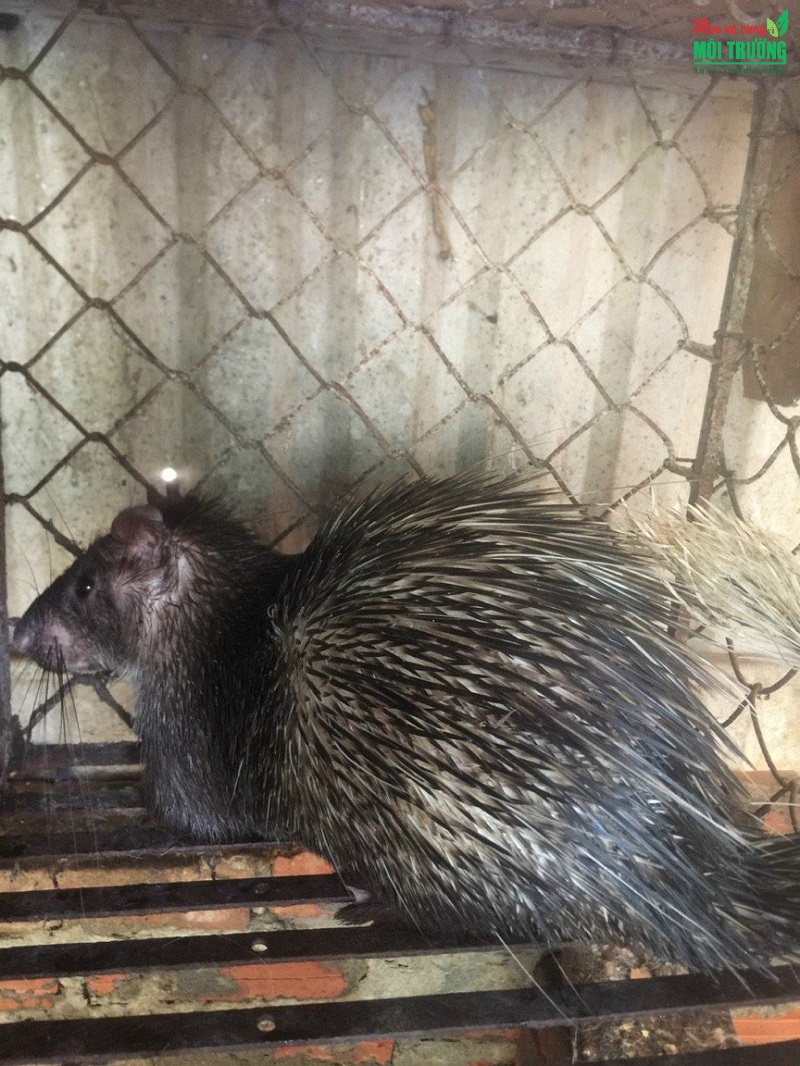
Despite the fact that wildlife protection has made great strides during the past decades, it cannot be denied that for every second and every minute that goes by, thousands of wild animals are disappearing under the hands of mankind. Humans are the criminals that have led to the extinction of wildlife species. To respond to World Wildlife Day 2022: “Recovering key species for ecosystem restoration”, the Editorial Board of the Journal for Forest and Environment Protection would like to provide our audience with the series “Hunt wild animals on social media” written by Investigative Journalist from www.baovemoitruong.org.vn. In order to have wild animals sold publicly on pavements and advertised on virtual sites, many local inhabitants have set big and small traps in the forest, with bait “technology” that mimics the cry of wild animals, slaughtering many species to satisfy the demands of humans.
Millions of traps are set from the virtual world to real life
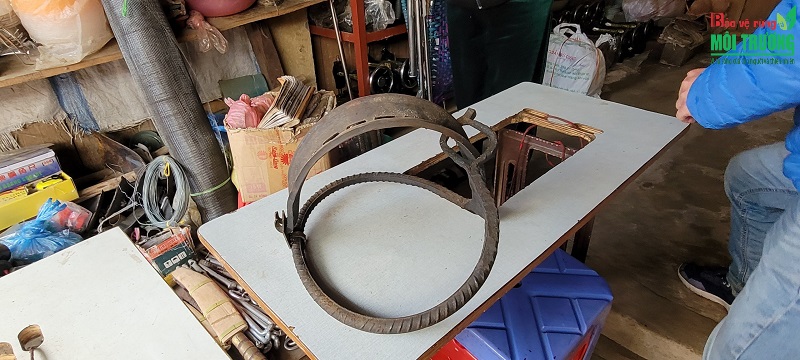
When users type the two words “animal traps” in the search engines of several social media sites such as Facebook, Zalo, or Youtube, thousands of search results will appear, providing the information, pictures, promotion videos, and the selling of animal traps, ammunitions, shotguns, bows, crossovers with different types, sizes, and prices. Each account sells hundreds to thousands of traps.
Goods are sold nationwide. Upon order placement, the goods will be transported to the place. Payment is made upon receiving the goods. The group of Journalists from the electronic Journal for Forest and Environment Protection www.baovemoitruong.org.vn has spent time “hiding” in social networking sites to find out about the trade methods and the sales numbers of those who are offering a hand to destroy the environment.
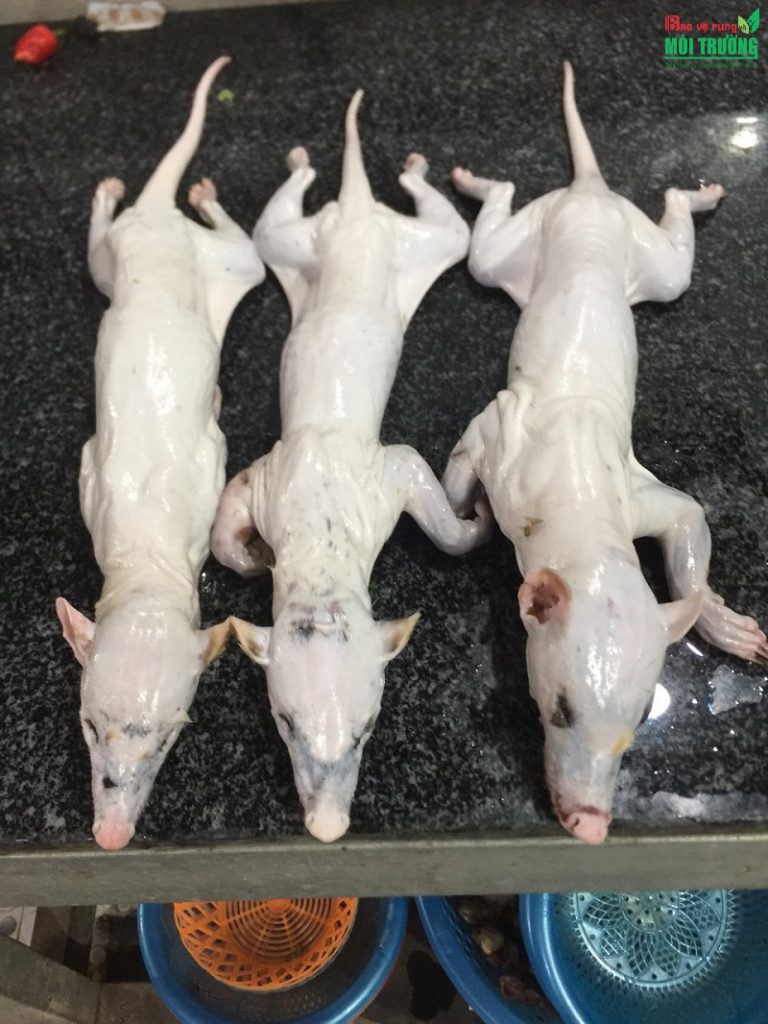
Animal traps are sold mostly in mountainous regions and midland provinces in the Northern region such as Phu Tho, Yen Bai, Lao Cai, Lai Chau, Son La, Dien Bien; North of Central Region such as Nghe An, Ha Tinh, Quang Binh, Quang Tri; the border areas between Central Highlands-Laos-Cambodia such as Kon Tum, Gia Lai, Dak Nong. The traps made of parachute rope, monofilament, bicycle brake lines, iron cages, clamps, … are filled with sacks and then stacked on trucks to be transported to areas that have forests and wild animals for consumption.
On social networks, there are currently many groups of animal traps, exchanging experiences in this field. The reporter befriended some skilled hunters and even moved to the meeting place. We have witnessed them hunting, selling the goods in the central markets of the districts and communes, and bringing the “forest goods” to the city.
Even in the central markets of Ky Son and Tuong Duong districts (Nghe An province), EaSoup district (Dak Lak), or even the highlands of Mu Cang Chai (Yen Bai province)… a lot of animal traps are being sold openly every day. During the corn, rice, and wheat seasons, several hundred clamp traps and countless rope traps are sold.
A row of stalls of many small traders in the central market of Tuong Duong district sells a lot of wild animal traps made of twisted steel, clamps, all with sharp serrated teeth. The owner of an iron shop that sold animal traps told reporters about the ability of these traps to “hunt” animals: “Small clamps trap porcupines, don, squirrels, wild chickens, squirrels. The big clamps trap wild boars, bears, deers, etc,… If you want to trap any species, buy the corresponding trap. Several thousand traps are sold here each season.”
Although the traps to kill wild animals are sold openly in broad daylight in large numbers at central points, most of the authorities’ responses to our questions are “no sanctions yet” or “When I went on patrol, I caught very few animal traps”. Some even claimed that “when patrolling and controlling in the forest, the unit does not detect animal traps”.
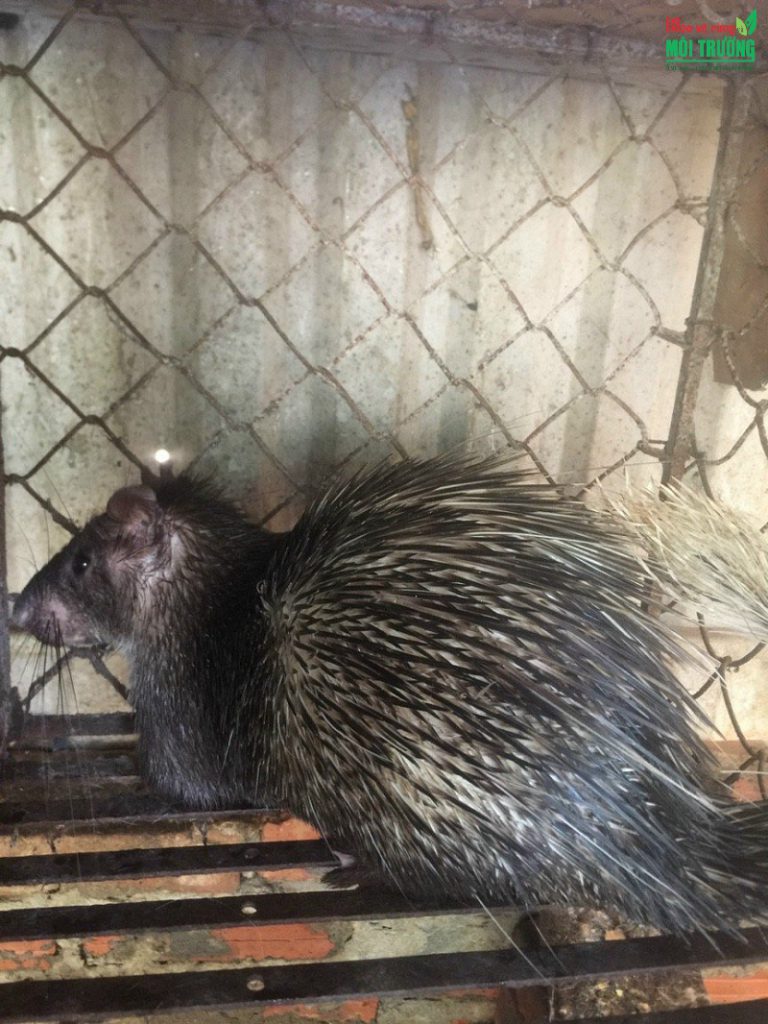
| Especially in Yen Bai province, during a corn season in a central market in a commune, a small trader sells thousands of traps to people hunting wild animals (!); But, according to the authorities, within the past 5 years, the whole province only discovered and seized 108 traps of wild animals. These are numbers that speak. |
According to estimates after a survey by the World Wildlife Fund in Vietnam (WWF), every year millions of traps are placed in the forests of Vietnam. The estimated number of traps in Vietnam is more than 5 million traps, based on an estimated trap density in the natural reserve of 110.7 traps/km2.
This trapping “crisis” is leading to rapid population decline and local extinction of many species, including predators such as tigers, leopards, jaguars, and their prey such as gaurs, bison, gills, and deers.
According to a survey by WWF, in the areas that protect saola in the two provinces of Thua Thien – Hue and Quang Nam, 127,857 animal traps were removed during the period 2011-2019 (an average of 14,206 removed traps per year ). The density of traps in Saola Nature Reserve in Thua Thien – Hue province and Quang Nam province is 880 traps/km2, the highest in the region.
“If it is not wounded in the legs, it has died”
Wildlife consumers often want to verify whether the animal actually comes from the forest by evidence such as bullet wounds, crossbow wounds, or wounds in its limbs. Knowing this psychology, many traffickers have brutally set up traps in a forest setting and let the farmed animals into the state of being trapped like the wild animals in a forest!
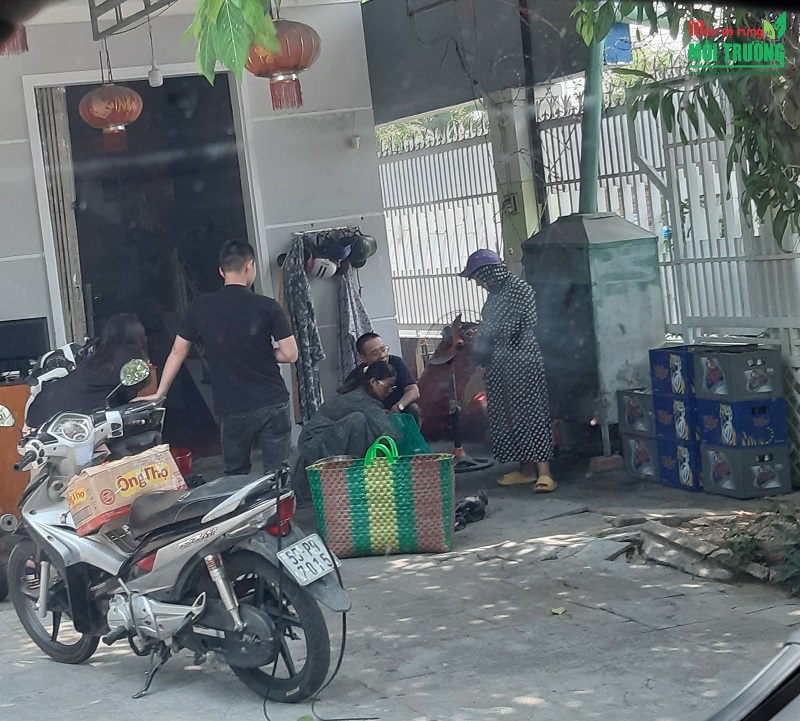
Afterward, the traffickers would take pictures and record videos to promote that their goods are forest goods, such as weasels, hedgehogs, and squirrels, that are recently caught in a trap. In reality, our investigation reveals that wild animals in restaurants are mostly farmed animals, specifically old weasels in weasel coffee farms, raised deers, and farmed hedgehogs. These animals are sneaked into restaurants and wear the label “quality forest goods” to trick the consumers.
“If it is not wounded, it is dead”. Upon hearing this quote from a wildlife trafficker on social media in Gia Lai province, who has met the reporters, one may interpret that an animal once caught in a trap will either get wounded or die. However, the meaning is entirely different.
The woman explained: “The consumers will always look at the wounds of the animals before paying the money. Therefore, those animals who are not wounded will be made wounded by us. We even have to provide pictures of the animal caught in a trap to make the consumers believe us. We cannot sell those animals that are not wounded in the legs.”
In Dak Nong province, when talking to reporters through a social network account, a woman here even recorded a video of herself selling wild animals right along the highway under a tall pine forest with green leaves. The road was very crowded with traffic, with people sometimes stopping to buy goods.
Reporters spent a lot of time traveling by car to the place to see if the items sold were forest goods. This person insisted: “Look, wild boar has 3 hairs gathered in one place; wild deer have thick skin, golden hair. Look at their fibers. It definitely cannot be farmed goods. Every kilogram here is sold for the cheapest price at 250,000 VND/kg.”
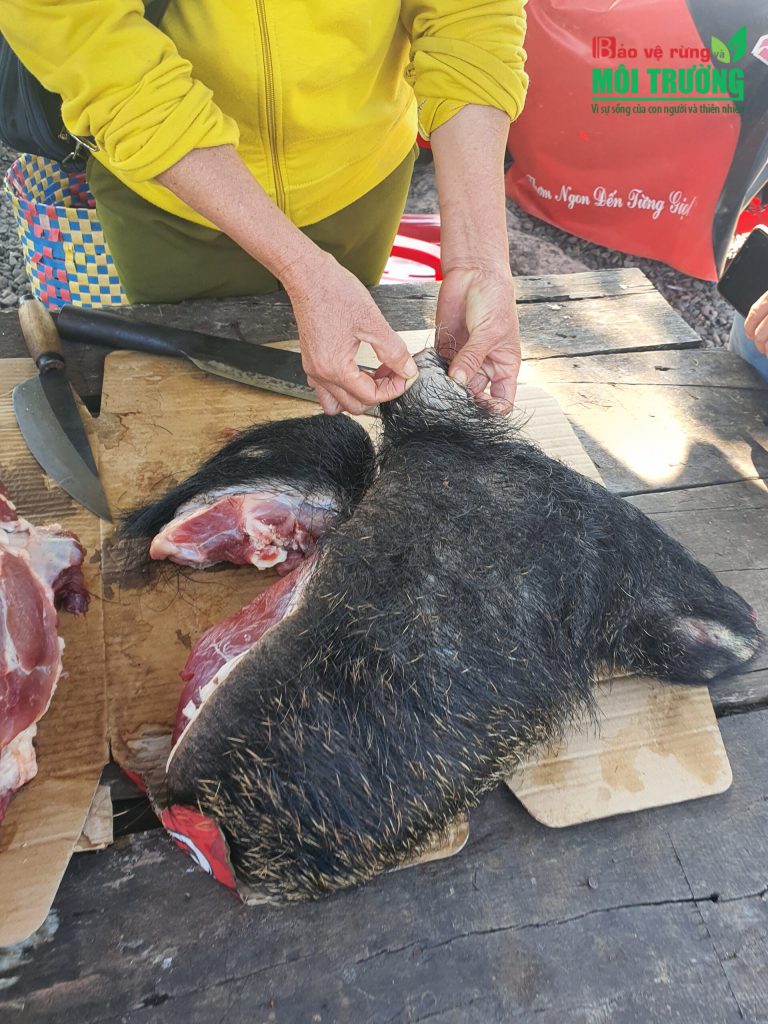
After recording, we shared this information with the relevant authorities of Dak Nong province and received the answer: “The meat sold along the highway turns out to be pigs and deers raised on farms instead of real forest goods. They only dare to sell farmed meat on highways”; “They mainly sell to passersby moving from one province to another because no one here ever eats that meat. If selling real forest goods, who dares to sell so blatantly!” – said a local resident. And the tricks of the sellers are to upload pictures of wild animals and injured wild animals online, then lure customers to buy, order, and then sell “farmed” goods.
Leaving Dak Nong province, we returned to several provinces in the North Central Highlands, continuing to follow social media accounts on groups with names that seemed unrelated to the slaughter of wild animals. The names were disguised under topics such as forestry, agriculture, conservation group, farming association… But once you became a member, there was only a “market” to trade wild animals on a large scale. Using unrelated group names is one of the methods traffickers seek to bypass the authorities and the “scanning” of social networking platforms
We got to know the traffcikers and made an appointment to meet in person. When we got there, there were usually bonsai shops, pepper sellers, grocers, fertilizers, specialty restaurant owners, but almost everyone we met was willing to supply wild animals in large quantities with different species such as squirrels, wild cats, lizards, king cobras, pangolins, tigers, bears,…
We have met and recorded dozens of wildlife traffickers from the virtual world to real life only by spending a little time surveying and connecting with traffickers. We have seen, heard, and touched wild animals. For every day that goes by, it is not clear how many animals have been trapped, captured, advertised on the internet, and delivered to the consumers. It is time the relevant authorities cracked down on wildlife trafficking and applied legislation to effectively resolve the problem.
Source: Bao ve Rung va Moi truong


